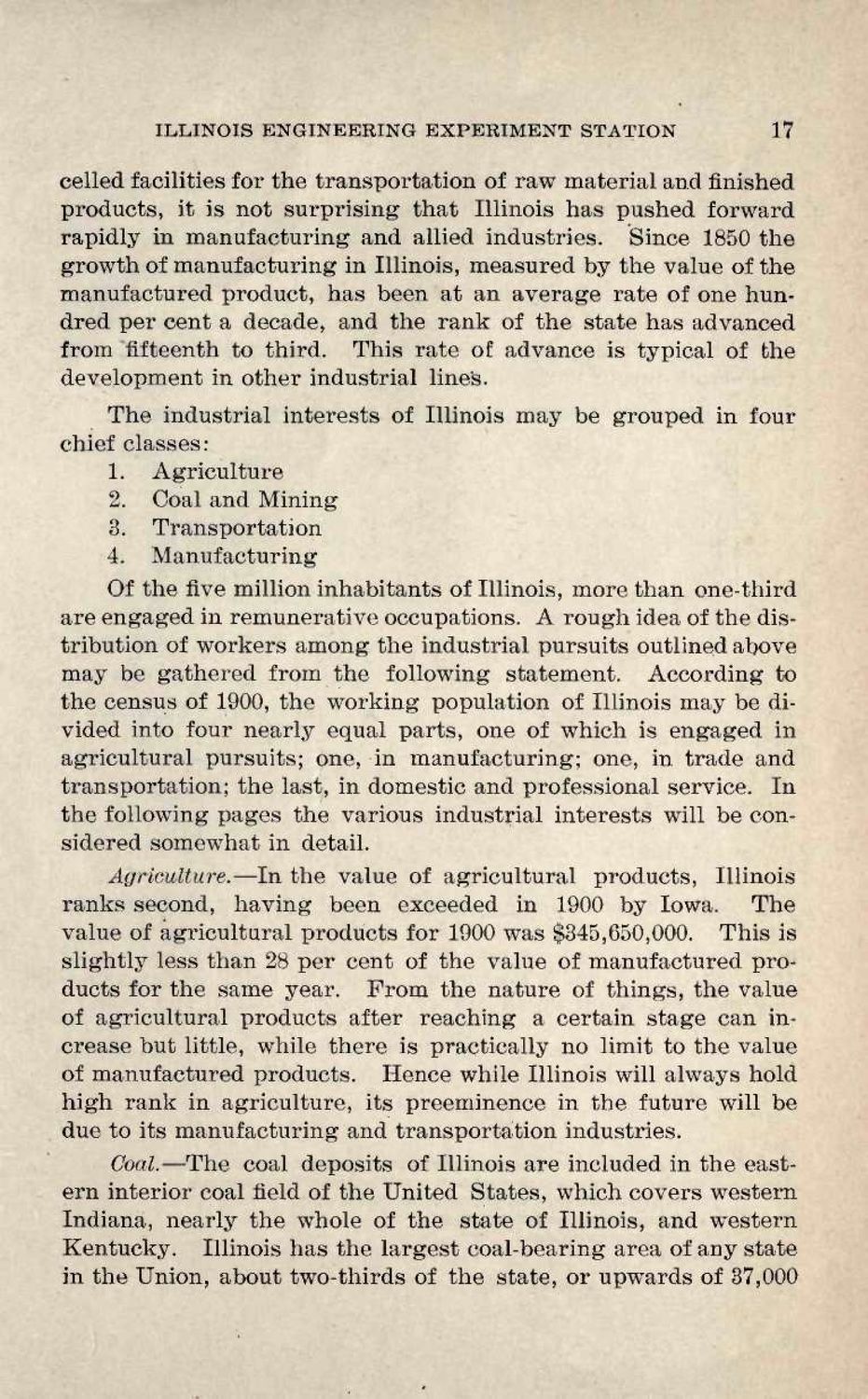| |
| |
Caption: Book - First Years of Engineering Experiment Station (1906)
This is a reduced-resolution page image for fast online browsing.

EXTRACTED TEXT FROM PAGE:
ILLINOIS ENGINEERING EXPERIMENT STATION 17 celled facilities for the transportation of raw material and finished products, it is not surprising that Illinois has pushed forward rapidly in manufacturing and allied industries. Since 1850 the growth of manufacturing in Illinois, measured by the value of the manufactured product, has been at an average rate of one hundred per cent a decade, and the rank of t h e state has advanced from "fifteenth to third. This rate of advance is typical of the development in other industrial lines. The industrial interests of Illinois may be grouped in four chief classes: 1. Agriculture 2. Coal and Mining 3. Transportation 4. Manufacturing Of the five million inhabitants of Illinois, more than one-third are engaged in remunerative occupations. A rough idea of the distribution of workers among the industrial pursuits outlined above may be gathered from t h e following statement. According to the census of 1900, the working population of Illinois may be divided into four nearly equal parts, one of which is engaged in agricultural pursuits; one, in manufacturing; one, in trade and transportation; the last, in domestic and professional service. In the following pages the various industrial interests will be considered somewhat in detail. Agriculture.—In the value of agricultural products, Illinois r a n k s second, having been exceeded in 1900 by Iowa. The value of agricultural products for 1900 was $345,650,000. This is slightly less than 28 per cent of the value of manufactured products for the same year. F r o m the nature of things, the value of agricultural products after reaching a certain stage can increase but little, while there is practically no limit to the value of manufactured products. Hence while Illinois will always hold high rank in agriculture, its preeminence in the future will be due to its manufacturing and transportation industries. Coal.—The coal deposits of Illinois are included in t h e eastern interior coal field of the United States, which covers western Indiana, nearly the whole of the state of Illinois, and western Kentucky. Illinois has the largest coal-bearing area of any state in the Union, about two-thirds of the state, or upwards of 37,000
| |